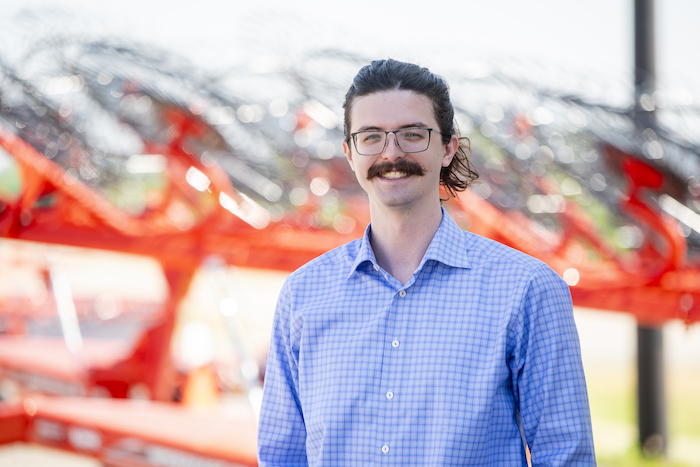In this episode of Farm Equipment Soundbites, Claas Farmpoint Head of Commercial Development, Patricio Frangella talks about how Claas’ new remote service dealership model works and its original success in the European and South American markets.
Patricio Frangella: FarmPoint is actually a system, a system that we implement in how we approach customers, where you put dedicated resident technicians in the concentration where the customers actually are, in the way — we service those customers closer and really within an hour distance of where the customers are in the case of service. And we service those technicians and we service those customers with what we call parts runners and working with them together with that. And how really bringing the model of brick and mortar type of dealerships really into service centers that would service those concentration of customers or customers themselves directly and what they actually need and where they need it and not them coming to us. We [are] trying to really avoid with really strong logistic approach and really strong technological approach to the customers to really concentrate on what they need and how they are and tailor our approach to them.
A different approach in that sense as well, right? And we’ve been doing the remote service support center, we’ve been doing that in South America for the last three years and [it] has been done already in Europe. So actually we’re implementing something in this market that was already been implemented before. So that is also something that I know and that’s part of my job, is implementing and coming here to the U.S. to actually implement that we already successfully implemented over the last three years in South America.
It was remote service I would say, three years ago it was implemented mainly in Europe and we grabbed that service already the very first year with a pilot of 60 something machines in Argentina. And we piloted that without telling anybody, without telling any customer actually that what we were doing. And that was funny enough because we were calling customers and customers were surprised, “Why are you calling me?” “Because we were seeing that your machine has this alarm and this is that, okay, can we help you this and that?”
And funny enough, the following year in March we actually said, “Okay, let's start talking about this now that we are more confident of the actual system that we’re putting in place.” And I was talking to this customer at the fair in March in the most important fair in Argentina there and the customer, I was trying to explain what remote service was and this is the service, you this you that and you get to this information and [how it] can help you. And if your machine and you want to change for a new machine, this new machine could have this as well, this and that I said. “Yeah, they called me,” he said. “Yeah, let me show you,” he said, and he actually showed me his cell phone and he had all this SMSs message from our lady. This lady that actually does this.
And she was actually sending the message and the pictures, “Okay, check this out, look at this.” And actually I saw it [was] very fantastic. Said, “Oh, all right, send me, please, that SMS to me. Take me a picture of that because I want to have that.” So the customer actually was showing me what was going on or they actually had the impact himself.
And that very second year we put three people really onto that really most important that and this last year we actually had a call center together with that to make, have a bigger vision only also to Uruguay and Paraguay, two neighboring countries. So now [it] has been spread over three countries. And that is fantastic and phenomenal and the two people actually are calling you proactively are two ladies.
So it is very interesting also having the support, of course with a technical person, there’s a support function within that team, but really trying to take the hassle out of the technicians or of this service coordinator of some questions or some things of the machines that normally are not that critical and other things, but we really can solve over the phone and we could solve in a year 600 calls and taking that away from the actual network. So that was something very, very interesting that we brought in. And I definitely believe that could be very, very beneficial for us and especially for the customer that sometimes he tries and tries to repair, tries to repair this .And he has he not find the solution, he could not find the answer. Then in the end he’ll call you.
“So what you have been doing? You should have call me the first time.” “Yeah, I want to do it myself.” But if I proactively call you within the harvest and try to help you, that very certain moment though, when he shows up, we both save a lot of things, we save a lot of money and we save you hassle and you goes straight into the root causes that typically could occur. If not, really send the technician as quickly as we can and, if needed, parts as well.
Or maybe the solution is like, “Look, this is the project you need to probably change. Do you want us to send that to you? Okay, okay. The parts runner could send that and go down and send that to you.” So yeah, that’s the concept there and then. That’s the beauty of that and we’re experiencing that very, very well with greater customer satisfaction.”







